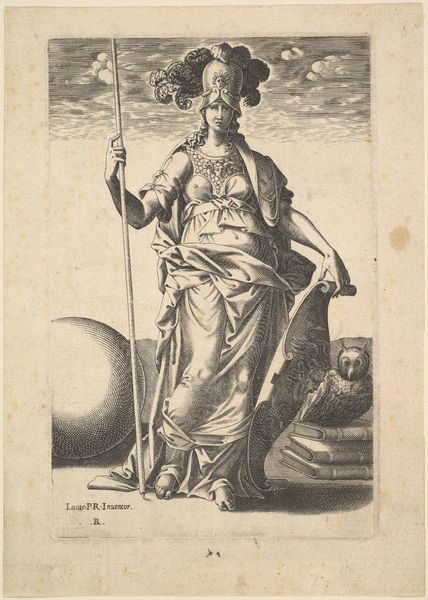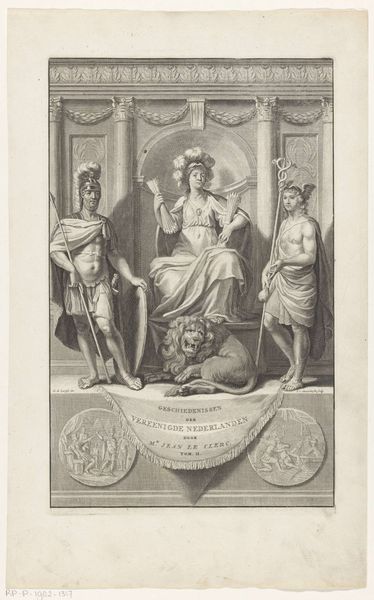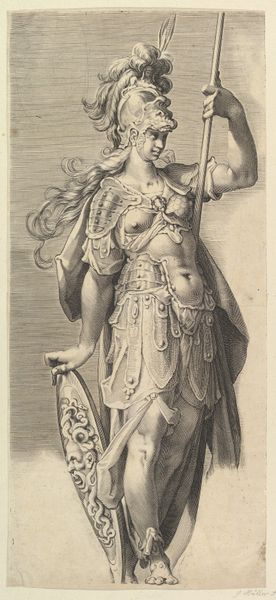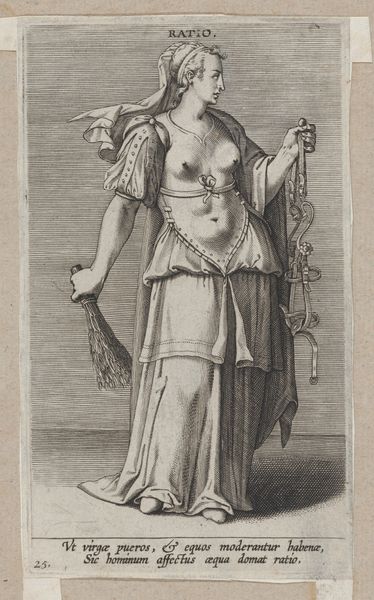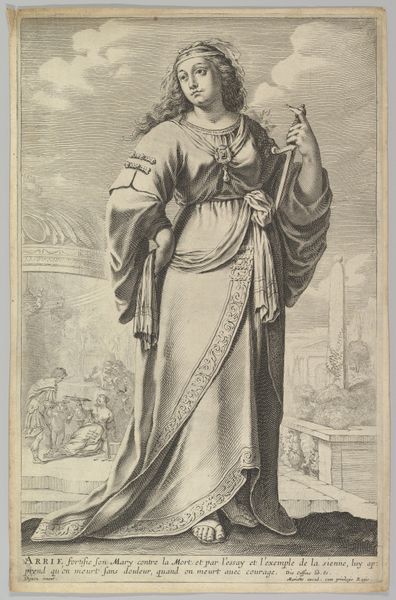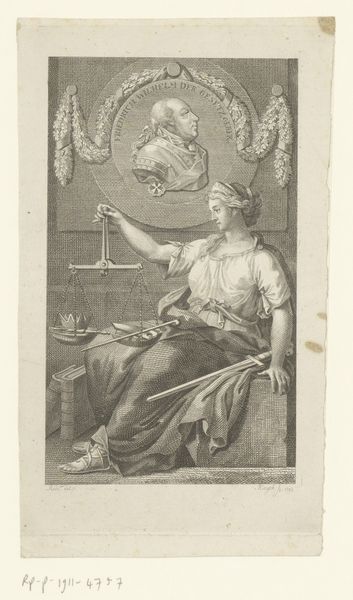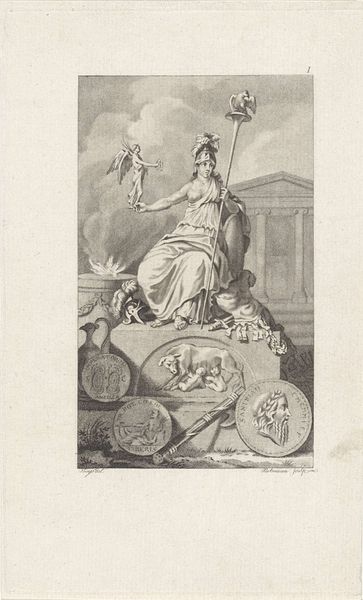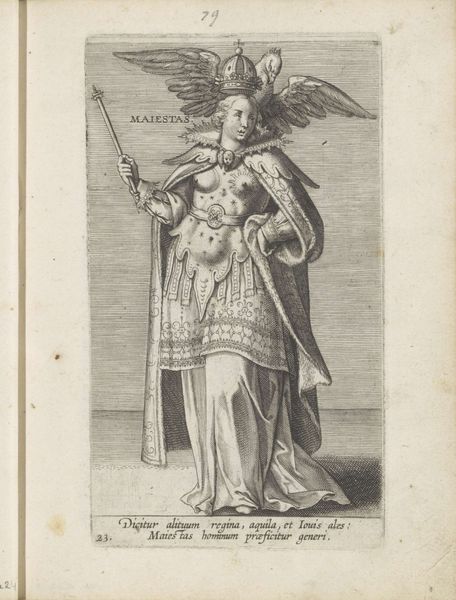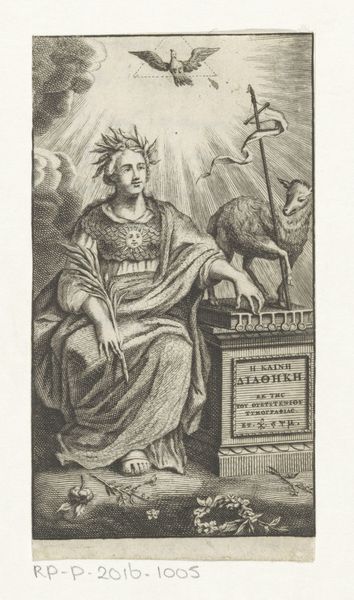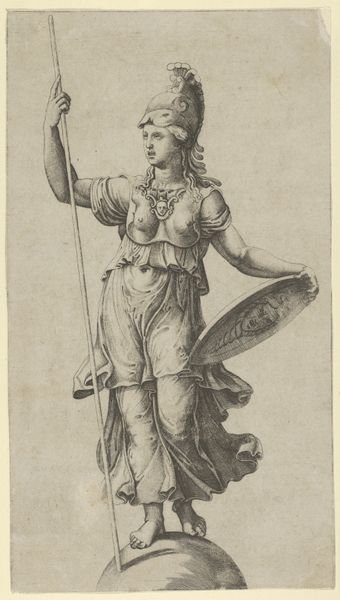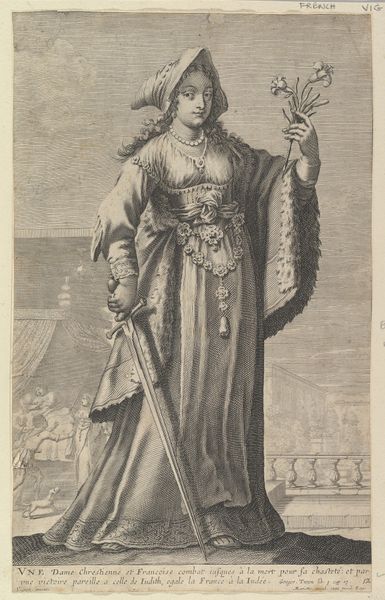
drawing, print, engraving
#
drawing
#
allegory
#
baroque
# print
#
greek-and-roman-art
#
figuration
#
history-painting
#
academic-art
#
engraving
Dimensions: Plate: 16 3/16 × 14 5/16 in. (41.1 × 36.4 cm) Sheet: 20 7/8 × 15 1/4 in. (53 × 38.8 cm)
Copyright: Public Domain
Editor: So, this is "Pallas," an engraving by Giovanni Girolamo Frezza, dating sometime between 1680 and 1741. The figure of Pallas Athena is very regal, almost severe. What can you tell us about the context of this print, considering the politics of imagery? Curator: Well, seeing Pallas – Athena, the goddess of wisdom and warfare – we must think about the patron and the public. Prints like this one served to disseminate classical ideals, especially among the elite. This image would have been acquired to signal the owner’s cultivation and knowledge of classical history. Do you notice how the goddess is portrayed? Editor: Yes, very stoic, almost idealized. Holding a spear and a miniature winged figure…what does it signify? Curator: Exactly! It emphasizes her virtues and authority. The depiction of Pallas seated on a throne reinforces her position of power. Think about where this print would have been displayed – likely in a study or library, spaces of learning and governance. How does the Palazzo Barberini mentioned in the inscription play into this? Editor: Right, that connects it to a specific powerful family. Displaying this would associate them with wisdom, strategy, and legitimate rule through a link to classical antiquity. Curator: Precisely! And who gets to own, view, and interpret that classical legacy is never a neutral question. This wasn’t just about aesthetics, but also about social and political positioning. Editor: It’s interesting to think about how something that seems so straightforward is actually involved in the dynamics of power and influence. Curator: Indeed! And by understanding those historical power dynamics, we can truly appreciate the richness and complexity embedded in such prints.
Comments
No comments
Be the first to comment and join the conversation on the ultimate creative platform.
